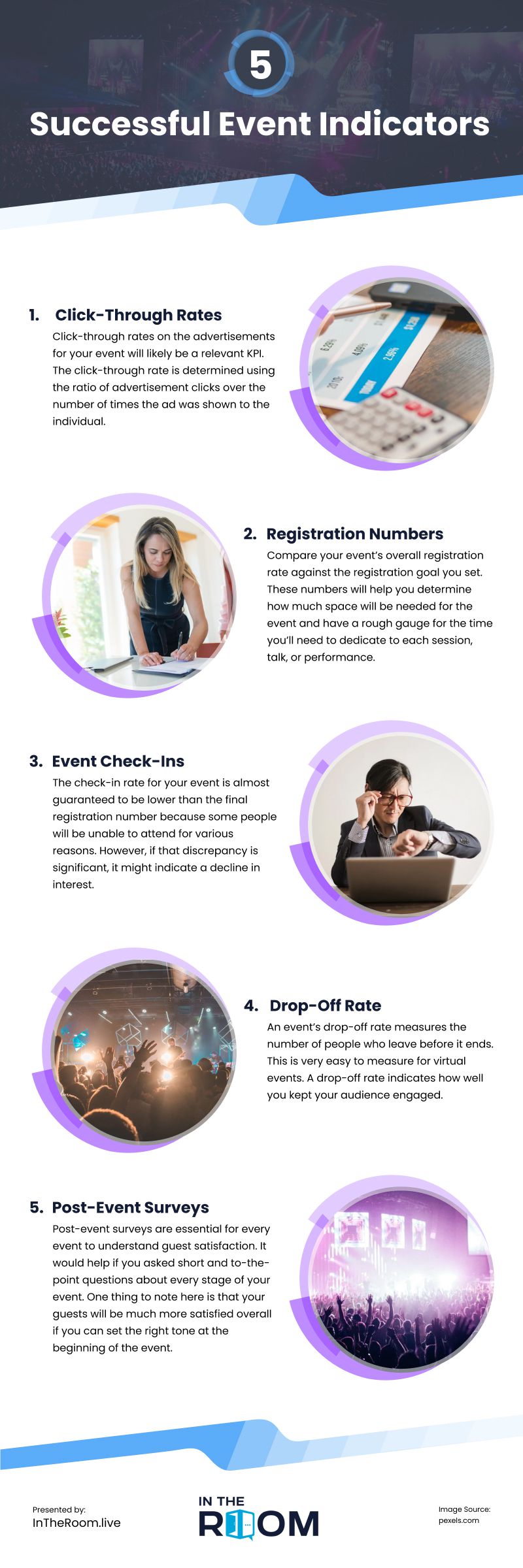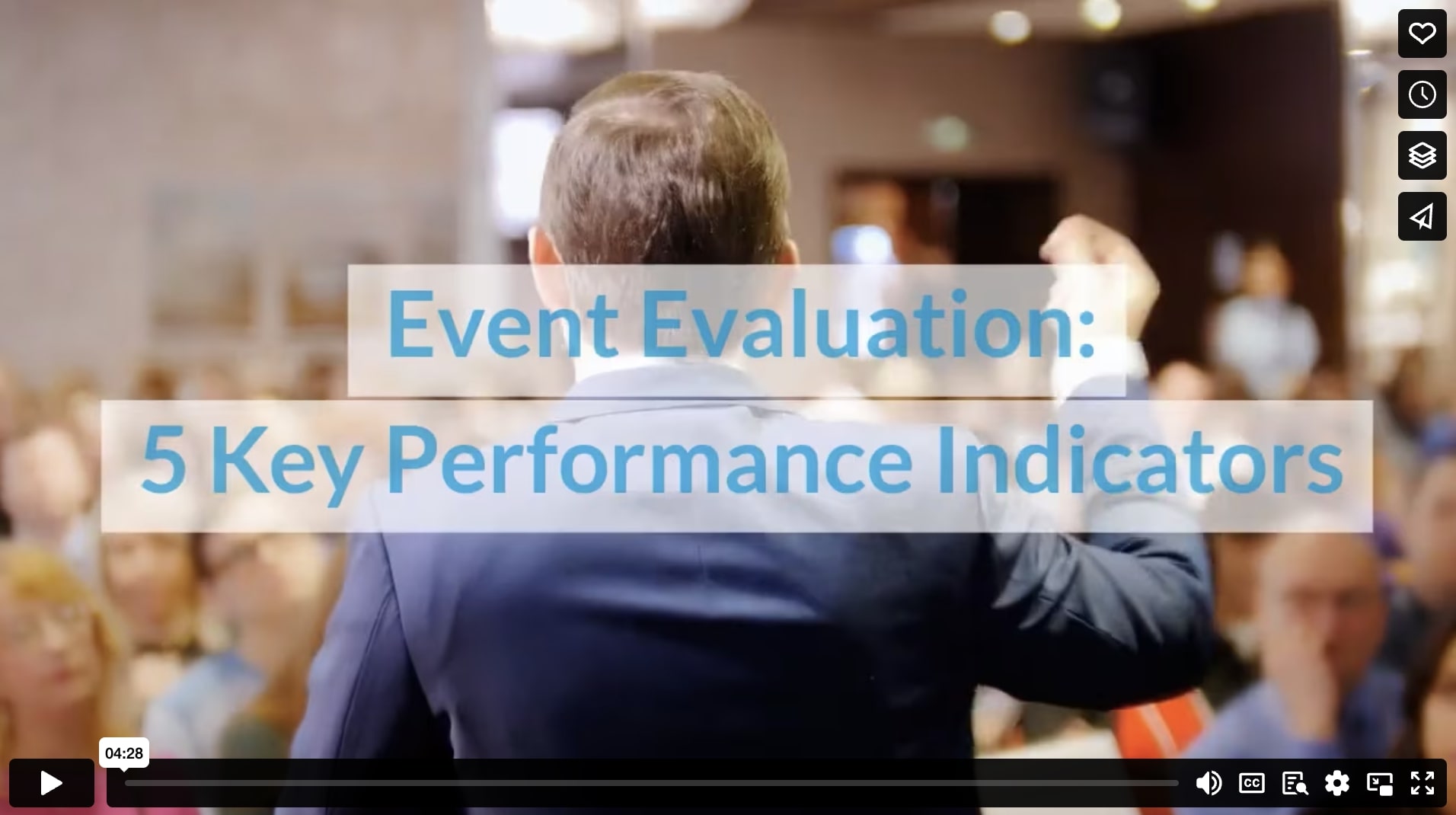As a live event organizer, it can sometimes feel like your work never ends. When you’re not planning your next event, you are coming up with marketing strategies, booking keynote speakers, and so much more.
It can be easy to let post-event analytics get lost in the shuffle. However, to determine the success of your event and decide on any changes needed to improve the next one, it is vital to look at a few essential key performance indicators.
But which key performance indicators (KPIs) should you be evaluating? And how can they be used to gauge event performance and create a plan for the future?
First: Determine Your Event Goals
Before deciding which KPIs are important, you’ll need to consider the overall goals of the event. Here are some potential goals for your event:
- Network with companies and influential people
- Launch a new product or line of products
- Teach workshops and inspire motivation
- Spread brand awareness
- Recruit employees or clients
Your event goals may cover several of these categories or be industry-specific. Once you’ve settled on your event’s primary goals, it will be easier to establish the right KPIs to focus on. These KPIs should be directly related to your goals.
For example, let’s say your goal is to lead workshops for your employees or clients. If you send out post-event surveys to attendees to gauge their experiences, their responses would be a great KPI to examine how your workshops have impacted them and how you could improve teachings at your next event.
With that in mind, let’s look at a list of potential KPIs to decide which you want to analyze after your next event.
Potential Key Performance Indicators
1. Click-Through Rates
Click-through rates on the advertisements for your event will likely be a relevant KPI. The click-through rate is determined using the ratio of advertisement clicks over the number of times the ad was shown to the individual. Examining the click-through rate will tell you how effective your marketing campaign was—whether your ads were being shown to the right audience and whether you need to adjust the hook or event description moving forward.
2. Registration Numbers
Compare your event’s overall registration rate against the registration goal you set. These numbers will help you determine how much space will be needed for the event and have a rough gauge for the time you’ll need to dedicate to each session, talk, or performance.
But there is even more you can do with this KPI. After analyzing your click-through rate, you can compare it with the registration numbers for further insights. If you have a high click-through rate but a low registration rate, that may indicate that you’re marketing to the right audience, but something about your event or the advertisement just isn’t hitting the mark.
You can also update the event registration software to ensure that it is user-friendly and designed to encourage your audience to register.
3. Event Check-Ins
The check-in rate for your event is almost guaranteed to be lower than the final registration number because some people will be unable to attend for various reasons.
However, if that discrepancy is significant, it might indicate a decline in interest between the time of registration and the day of check-in. To keep your audience’s interest piqued, include more consistent email marketing and fresh and exciting content shared in emails and on social media platforms.
4. Drop-Off Rate
An event’s drop-off rate measures the number of people who leave before it ends. This is very easy to measure for virtual events. A drop-off rate indicates how well you kept your audience engaged.
Measuring the drop-off rate for an in-person event can be difficult without using dedicated event attendance tracking software. This software tracks whether people stay for the duration of each session they attend, allowing you to analyze every session individually to measure its engagement success.
5. Post-Event Surveys
Post-event surveys are essential for every event to understand guest satisfaction. It would help if you asked short and to-the-point questions about every stage of your event:
- The registration and check-in processes
- Each individual session attended
- The food and beverages provided
One thing to note here is that your guests will be much more satisfied overall if you can set the right tone at the beginning of the event. When you choose event check-in software that streamlines your check-in process and eliminates long lines, you’ll give attendees a great first impression, and that feeling carries through to the rest of the event. If you’ve done everything right, your post-event surveys should receive minimal negative feedback. Still, asking guests for their opinions is vital to optimize future events.
Analyzing Indicators for Success
You could look at many other key performance indicators, but the ones listed here are relevant for nearly every kind of event, regardless of your goals. Once you’ve determined your goals, you can choose which KPIs to analyze that will tell the most about your event’s success.
Video
Infographic
Analyzing key performance indicators (KPIs) is crucial for assessing your event’s success and planning for future improvements. Take a look at this infographic to review a list of potential KPIs that you may want to analyze after your next event.


